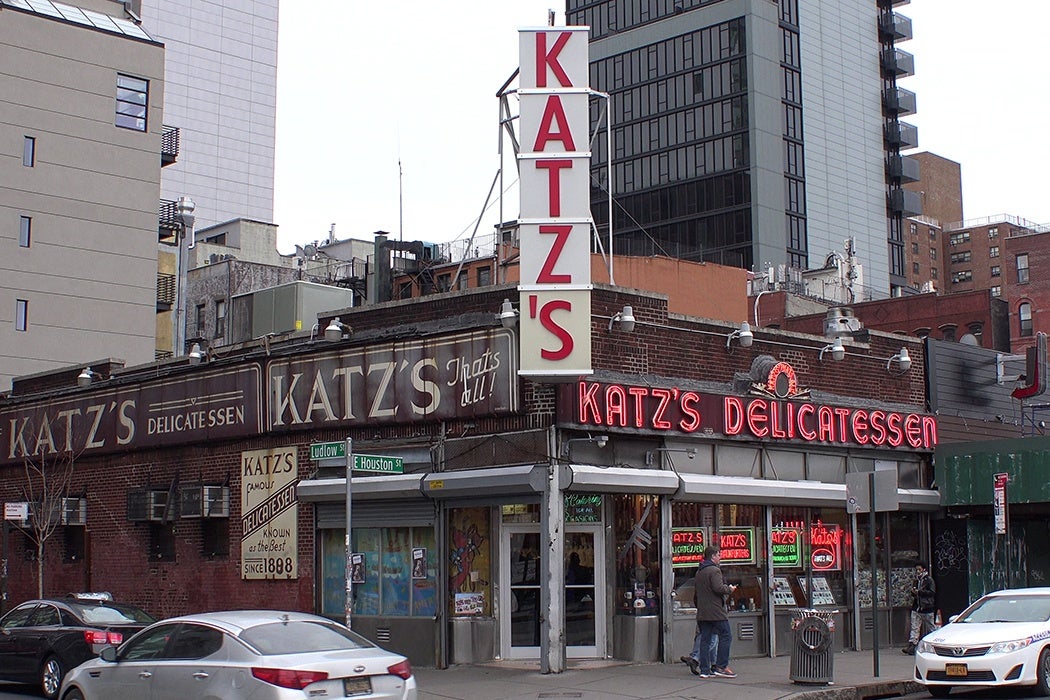The Jewish deli is a New York City tradition that has spread far beyond the city’s limits. It’s a tradition worthy of its own history, and NYU Press has obliged with Ted Merwin’s Pastrami on Rye: An Overstuffed History of the Jewish Deli. And he’s not the only one. So, while you decide if you’re going to take half that huge sandwich home for dinner or eat it all now, let’s take a look at this history.
Old school New York delis like Stage, Katz’s, Carnegie, 2nd Avenue, and Barney Greengrass, were—and some still are—temples of “pickled herring, belly lox, sable, white fish, matzo ball soup, borscht, dill pickles, potato pancakes, stuffed cabbage, chopped liver, salami, frankfurters (particularly the fat ones called ‘specials’), tongue, corned beef, and of course hot pastrami.” The menu here is provided by Harry G. Levine, explaining his “gastronomical Jew” father’s “most sacred objects.”
As Levine tells it, though, the “Jewish deli” was far from sui generis. These stores arose out of pre-existing German Delikatessens, places where delicious delicacies were sold. New York City was a heavily German city following the great wave of migration that began in the 1840s. “Germany” was then a kaleidoscope of statelets still years away from unification; the failed revolutions of 1848 sent many aboard to try for something better. Many of these Germans went to farm the American frontier states, but plenty of others stayed on the East Coast.
So when Yiddish-speaking Jewish immigrants from Eastern Europe started coming to the U.S. in 1880s, they discovered that German Americans, most of them non-Jewish, had already popularized “a variety of sausages (or ‘weiners’), beef frankfurters, sauerkraut, hamburgers, meat loaf, liverwurst, many cold cuts, noodle dishes, dill pickles, herring in cream sauce, lager beer, seltzer water, pretzels….” Some of those German forbearers had been Jewish who kept kosher; their eastern co-religionists built on the both the kosher and gentile models of the delicatessen.
One thing the Yiddish-speaking Jews definitely added to the deli menu was pastrami, a smoked variation on corned beef. As Levine reminds us, America was the land of cheap beef, more beef than most Europeans had ever seen in their lives. The spices rubbed onto the beef brisket cut used for pastrami tell us even more about this delicacy. Cinnamon, paprika, allspice, and hot pepper show the influence of the Turks who had ruled southeastern Europe, where pastrami seems to have originated in Romania, Bessarabia, and Moldavia. “Pastrami,” Levine says, was probably coined in America by Yiddish-speakers “inspired by the word salami, adapting it from closely related Romanian, Russian, Turkish, and Armenian words.”
And as Catherine V. von Schon notes, southeastern Europe offers another addition to the vocabulary of the deli: the hero (sandwich) may well stem from the Greek gyro. A gyro, after all, ain’t nothin’ but a sandwich.







